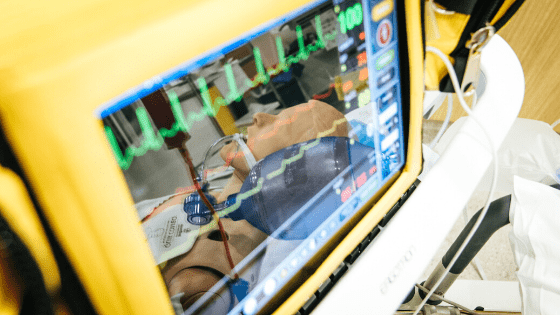Practical, hands-on training is crucial to ensure military personnel, first responders, and hazmat workers are equipped with the skills and confidence necessary to handle CBRNe and hazmat incidents, but creating realistic training experiences can be difficult, expensive, and time consuming. For these reasons, most agencies outsource their hazmat training; however, with new technology and tools available, we can expect to see more and more in-house hazmat training as time goes on. Aside from the obvious cost benefits of training in-house, flexibility with scheduling and the ability to conduct refresher lessons as needed are also great advantages.
This article will explore essential questions to consider when deciding between two common types of hazmat training:
- Simulant Agent Training (SAT) – Chemical substances that mimic the properties and behaviors of real chemical agents are used to create readings on front-line meters.
- Computer-Based Simulated Training (CBST) – Intelligent, computer-based technology simulates how front-line meters would react when exposed to hazardous materials. Simulators may be controlled entirely by instructors or in response to electronic sources pre-positioned within the training area.
First and foremost, is this type of training realistic?
While most meters are fairly simple to operate, using chemical simulants to create readings that students would see in real life is no easy task. When simulants fail to give practical readings, yelling across the facility “Okay Bob, your oxygen is at 25 – now what?” brings us further and further away from real life.
With CBST, the success of the training does not have to rely upon perfect weather conditions, perfectly stored/prepared/dispensed simulants, or perfectly calibrated meters. Because the instructor is in complete control of the readings on the meter, they are able to stick to their planned training scenario without worrying about whether or not their gas simulant is being blown away in the wind or their student’s meter was calibrated properly.
Is this training method versatile, dynamic, and scalable?
Ordering, storing, transporting, and disposal of one simulated chemical is already a lot of work, let alone multiple different kinds. With SAT, classes are restricted to the material they have, leaving instructors unable to offer dynamic learning experiences.
Dynamic training that incorporates multiple different hazardous materials is easy with computer-based simulators like the HazSim Pro 2.0 which offers 4, 5, and 6 gas, radiation, a CBW bar graph, as well as single gas all in one system. This offers unlimited scenarios that can be carried out in virtually any setting, for any size class – which is another advantage to CBST, it’s scalable.
Further, the number of detection systems available seems to multiply day after day, so incorporating devices and procedures that are brand-agnostic and versatile is key in establishing a training program that promotes interagency cooperation.
Can training scenarios be replicated reliably?
Environmental factors such as temperature, wind, and humidity can make chemical simulants extremely difficult to dispense and control. Even in perfect conditions, there is still a chance simulants may not give students the readings instructors are hoping for. Trainers may find it next to impossible to repeat the scenario with the same exact readings for each student or class every time. Without any consistency, it’s difficult to create and monitor benchmarks.
Using a computer-based simulator, the exact same scenario and readings can be replicated for every student, in every class. Benchmarks can be set, therefore student understanding can be measured.
Are there environmental considerations?
Many simulants, while not deadly like their counterparts, still contain highly carcinogenic ingredients. Especially when it comes to chemical warfare agents (CWAs), manufacturers instruct operators to use simulants in “small quantities” and only under safe conditions including wearing vinyl or nitrile gloves and protective goggles as well as ensuring proper ventilation. Many of these simulants are not easily biodegradable, so repeated use in specific areas can unfortunately lead to a build of of toxicity over time – potentially becoming a major hazard to both humans and the environment. Additionally, having to decontaminate all the training equipment costs time and money.
With CBST, training can safely be set up anywhere – including public buildings and areas with civilians. Without strict environmental regulations to adhere to, large training areas can be set up quickly and with ease.
Is this training method safe?
CBST devices offer realistic, hands-on experiences with no health risks to students and zero environmental impact.
Is this training method cost effective?
Add up the cost of procuring, handling, storing, transporting, and disposing of chemical simulants, gas simulants, and especially radiological sources. What about the impact these simulants might have on your front-line meters over time? Take into consideration additional costs of ongoing maintenance and service for those front-line meters to ensure operational readiness. Minimizing wear and tear on your equipment is crucial.
Computer-based simulated training devices offer a cost-effective and practical solution that doesn’t require extensive ongoing maintenance, strict compliance with regulations and additional approvals for use, or clean-up between exercises.
What are your thoughts? Please join the conversation and leave us a comment below.

